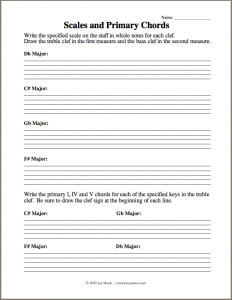 Just added to the Printables > Worksheets page:
Just added to the Printables > Worksheets page:
Scales & Primary Chords 4 (DbC#GbF#) Worksheet
This worksheet is a continuation of set of worksheets that practice writing out scales and primary chords on the staff (click here to view the first one which is for the keys C, G, D, and F, click here to view the second one which is for D, A, E, and Bb, or click here to view the third one which is for Bb, Eb, Ab, and B).
Ideally, this worksheet is designed for the intermediate+ student who is already familiar with the scales and primary chords for the keys of Db, C#, Gb, and F# major, and perhaps could use some review in writing them out on the staff. However, this worksheet could also be used during a group lesson while introducing these ideas for the first time.
Terms/concepts covered in the worksheet:
- An understanding of key signatures for Db, C#, Gb, and F# major.
- Practice writing out scales.
- Practice writing out primary chords.
To download, visit the Printables > Worksheets page and scroll down to the S’s for “Scales & Primary Chords worksheet.”




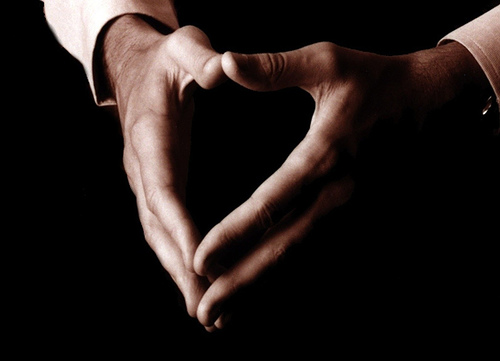
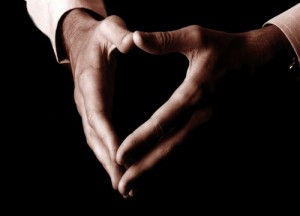 At a piano lesson this week, I observed my student grow increasingly frustrated with herself whenever she made a mistake. She would “growl” at herself and start back at the beginning of the phrase.
At a piano lesson this week, I observed my student grow increasingly frustrated with herself whenever she made a mistake. She would “growl” at herself and start back at the beginning of the phrase.
 This month’s discussion topic:
This month’s discussion topic:


 Audacity is a piece of powerful sound editing software that is free to download. It is available both for both Mac and Windows computers.
Audacity is a piece of powerful sound editing software that is free to download. It is available both for both Mac and Windows computers.

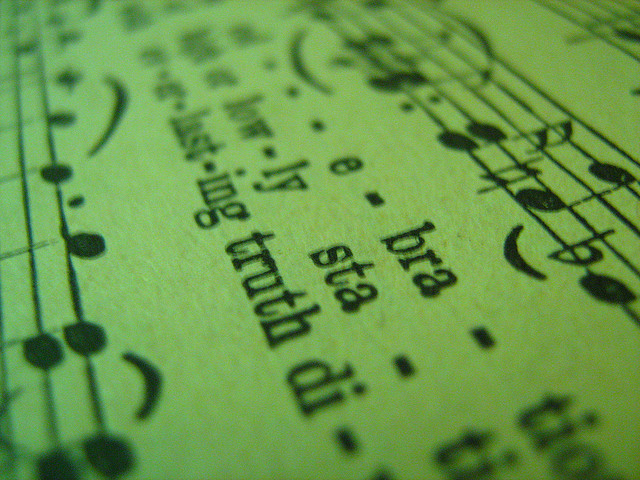
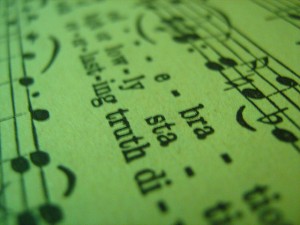 Here is the summary post for the
Here is the summary post for the